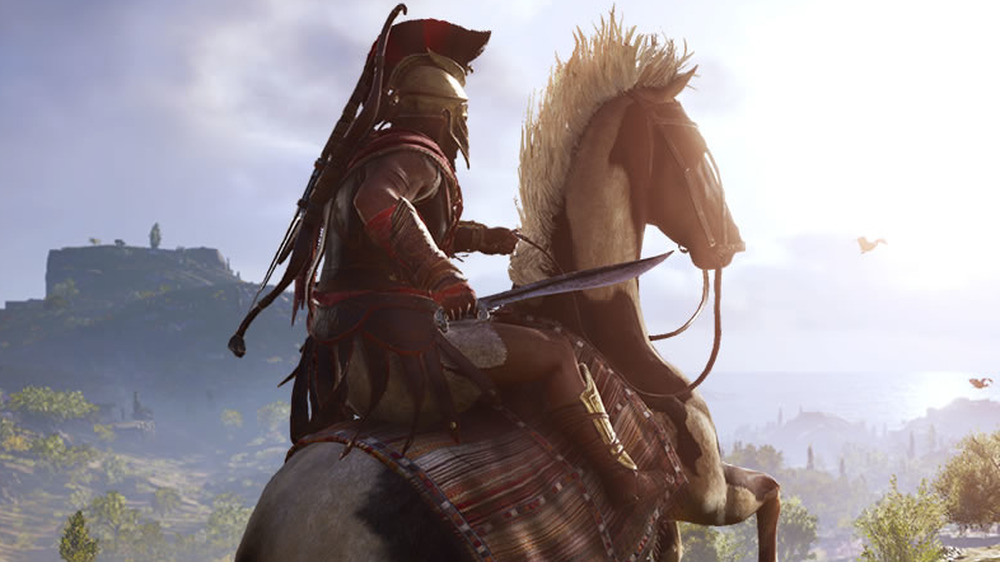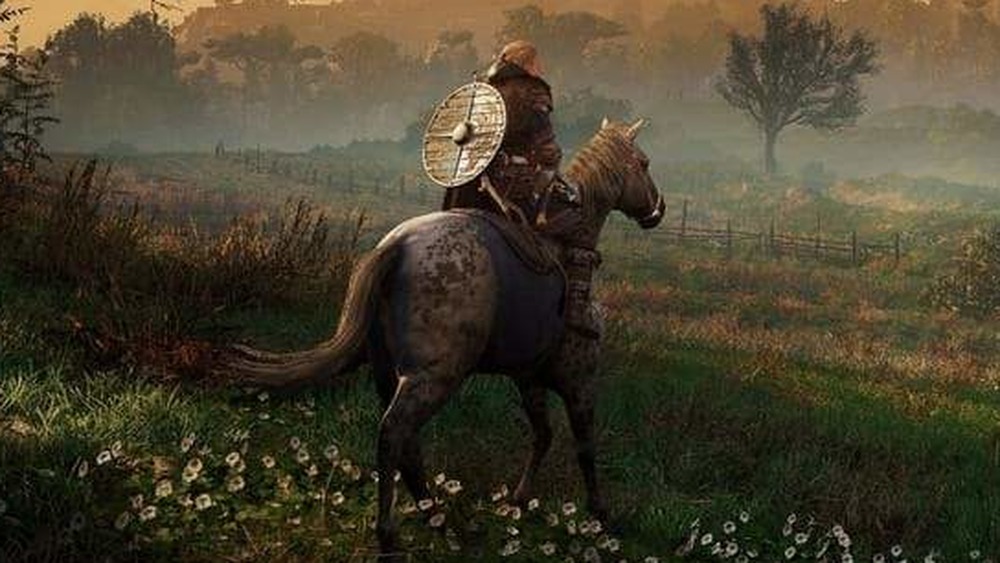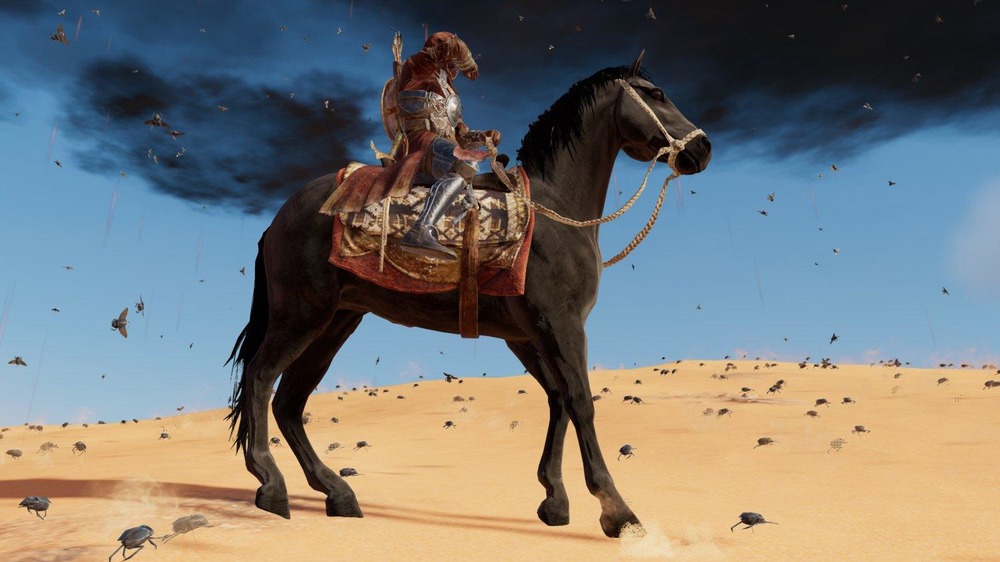The Untold Truth Of Assassin's Creed's Horses
While Ubisoft's long-running Assassin's Creed series places much of its focus on conflicts between people and exploring the historic settings its characters inhabit, it has always kept a place for animals in its world. The most recent version of the game, Assassin's Creed: Valhalla, even added a heartwarming feature to let players pet cats and dogs.
However, no animal has played a more prominent role in the Assassin's Creed series than horses, which have been present, and ridable, since the first entry in the franchise. While only used as transportation between regions in the original Assassin's Creed, they soon became combat companions in Assassin's Creed Brotherhood. Only two games in the series have not had horses in them, the nautically oriented Assassin's Creed Black Flag and Assassin's Creed Rogue.
However, considering that the Assassin's Creed franchise has been evolving over several years and covers time periods thousands of years apart, some inconsistencies in the horses have appeared in various games. Here is the untold truth of Assassin's Creed's horses.
Evolution of horses in Assassin's Creed
An imgur post by user Saradoxy perfectly illustrates how the equine companions of Assassin's Creed have changed since the beginning of the series. As you can guess, the digital horse models improve as the technology supporting the games becomes more robust, but there are also some interesting design choices from game to game.
The horses in the first two games are significantly larger than the first two protagonists, Altair and Ezio. While generally well proportioned, the models have sharp angles they shouldn't, such as in the hind legs. Assassin's Creed Brotherhood smooths out some awkward angles, although the horses remain unusually large.
Assassin's Creed 3 improves upon its horses' proportions, although the textures used can look fairly unsettling. The horses in the game look unwell, with leathery skin that doesn't lend itself to a powerful warhorse companion one might expect from an Assassin's Creed steed.
Visual upgrades led to much smoother looking horses in Assassin's Creed Syndicate and Assassin's Creed Unity, although many of the horses in these games are not ridable. Instead, they were seen pulling carriages throughout the world.
Same horse, many regions
With Assassin's Creed Origins, the series received a significant graphical upgrade. Origins' horses looked the best yet, with details like reflective eyes bringing them to life in ways never before seen.
However, the detailed new model, featuring a smaller, high necked horse, has stayed the same from Assassin's Creed Origins to Odyssey to Valhalla. The three games are separated by 1,200 years of history and occur in geographically distinct areas, leading Polygon writer Simone de Rochefort to wonder how accurate these horses are for their place and time.
Rochefort asked University of Kent Professor Donna Landry to evaluate whether the horse fit the various periods. Professor Landry explained that while horses in Greece, Egypt, and England certainly didn't look alike, Ubisoft may have accidentally gotten it right for Assassin's Creed: Valhalla.
The horses in all three games (Origins to Valhalla) resemble a Friesian. Friesians are often used in films and television because they look striking, explains Professor Landry. While it is unlikely a Friesian would have been in ancient Egypt or Greece, by the time Valhalla's Eivor invades England in 873, the country was enough of a melting pot that a Friesian might be present.



